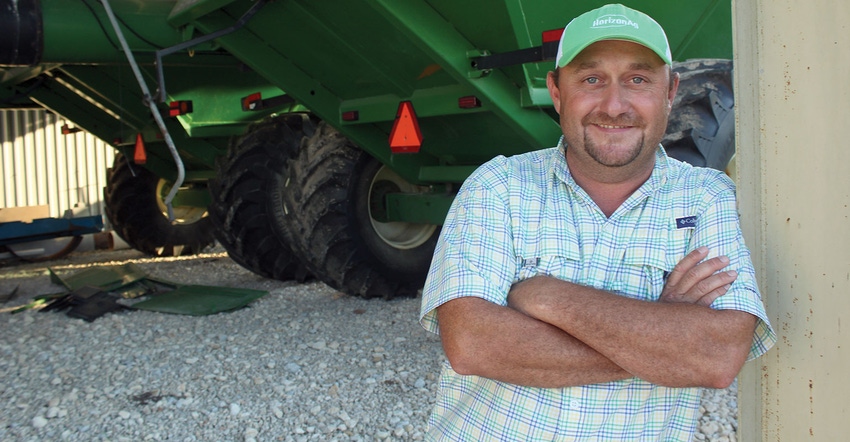
Armed with a degree in ag business from the University of Louisiana at Lafayette, Christian Richard (pronounced Ree’-shard) went back home to the Kaplan, La., family farming operation in 2000 and planted his first rice crop. It covered 200 acres and was supplemented by 40 acres of crawfish ponds.
Richard knew he wanted to do nothing else but farm. “In high school, my grandfather allowed me to maintain a crawfish pond,” says Richard, whose thick Cajun brogue confirms his French descent. “So much has changed since those days, and the main thing has been the production advancements made possible by the Clearfield rice system.”
Richard was selected to participate in the USDA Rice Foundation’s 2004 Leadership Development Program. “I believe it was around that time that the Clearfield technology was really starting to gain momentum,” says Richard.
Prior to the arrival and his adoption of that game-changing technology, Richard and other rice farmers relied on cultural practices to control red (weedy) rice and maximize yields. “We would water level/water seed or sometimes when the fields were sloppy, we would just mud in the seed,” says Richard. “I learned so much while participating in that leadership class. That’s where I really heard about drilling rice.”
Production Improvements
Because of the Clearfield System, it became common practice on Richard Farms to drill into the stale seedbed on the previous year’s soybean stubble. He has found a soybean rotation also helps break up weed cycles. Overall, his ground improved, and his yields jumped 20 to 30 percent. He went from being very inefficient with his potassium and nitrogen use — because those nutrients would get tied up in the dirt or lost when the fields were drained — to putting those nutrients on with a ground truck, and they started being taken up by the crop.
Before he started drill seeding, preparing the ground for planting was hard on his equipment, and he was planting at a much higher seeding rate. “We were just having it broadcasted aerially, which didn’t give us the spacing we needed,” says Richard. “When we put the water back on the field after draining it, blackbirds were everywhere, we had a lot of seed drift, and it was difficult to get a solid, uniform stand.”
The improvements have cut some costs and allowed him to better control diseases. “Because of the improved drills they were coming out with, we could get into a field right after burndown and plant,” says Richard. “Our erosion was reduced significantly. The Clearfield system really changed so much in our operation. It was a holistic change in our overall cultural practices.”
Richard then turned his attention to his ratoon crop, and how he managed it as a second crop. He began rolling the stubble flat on the ground with a smooth roller or used a flail mower to cut the stalks lower to the ground — usually to around 8 inches. “It really encouraged more uniform regrowth and allowed more sunlight to get to the crown, or the bottom of the plant,” says Richard. “The heads that are produced from the crown are larger and of better quality than the ones produced from the nodes at the top of the plant which are often called sucker heads. They’re not very long and don’t produce a lot of grain.”
Labor and the Work Environment
Richard Farms has enjoyed steady growth since that first rice crop was harvested in the fall of 2000. This year Richard air-drilled 2,500 acres of rice and is overseeing 1,500 acres of crawfish. He has three full-time employees and also secures labor through the H-2A program.
Of these migrant employees, eight workers run crawfish traps and three work on the rice side of operation. “We sell many of our crawfish to local retailers and restaurants, so I have employed a man from this area that manages the day-to-day logistics of deciding which crawfish go to which customers,” says Richard. “I have another local guy who is an excellent mechanic, and believe me, we keep him busy maintaining the two trucks we use to transport the crawfish and whatever other equipment repair needs to be done.”
Richard could have as many as 20 people working for him during the growing season or as few as four in the off season. “We have a good team of workers with a great moral on our farm,” says Richard. “I even have three guys I can call when I need some part-time help. They’re retired, can be here at a moment’s notice, and just love it when I call!”
About the Author(s)
You May Also Like




